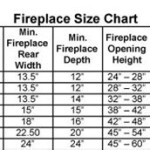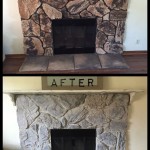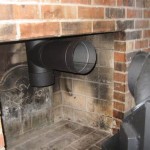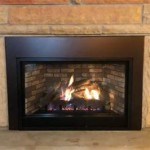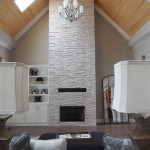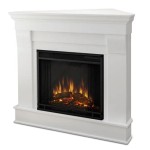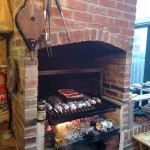Wall Mounting a TV Above a Fireplace: Hiding the Wires
Wall mounting a television above a fireplace offers an appealing aesthetic for many homeowners. It creates a focal point in the room, maximizing space and often providing optimal viewing angles. However, achieving a clean, professional look requires careful planning and execution, particularly when it comes to concealing the power and signal cables that can detract from the overall appearance. This article examines the key considerations and techniques for successfully wall mounting a TV above a fireplace and effectively hiding the associated wiring.
Assessing the Fireplace and Wall Structure
Before commencing any installation, a thorough assessment of the fireplace and surrounding wall structure is essential. This evaluation determines the feasibility of the project, identifies potential challenges, and guides the selection of appropriate materials and techniques.
Fireplace Type: The type of fireplace – wood-burning, gas, or electric – significantly impacts the installation process. Wood-burning fireplaces generate substantial heat, which can damage electronic components. Gas fireplaces also produce heat, though often to a lesser extent. Electric fireplaces, while producing heat, may offer more flexibility in terms of installation due to lower heat output. Understanding the fireplace type is crucial for selecting a suitable mounting location and implementing appropriate heat management strategies.
Construction Materials: The wall material surrounding the fireplace dictates the type of mounting hardware required. Common materials include brick, stone, drywall, and concrete. Each material necessitates specialized anchors and drilling techniques to ensure a secure and stable mount. Brick and stone require masonry drill bits and anchors designed for these materials, while drywall requires wall anchors or, ideally, securing the mount directly to wall studs.
Stud Location: Identifying the location of studs within the wall is crucial for a secure and stable TV mount. Stud finders can be used to locate studs behind drywall. When mounting on brick or stone, directly attaching to studs is not possible, and appropriate masonry anchors must be used. Improper anchoring can lead to the TV becoming unstable and potentially falling, posing a safety hazard.
Heat Considerations: Heat rises, and prolonged exposure to high temperatures can damage the TV's internal components, shortening its lifespan and potentially voiding the warranty. To mitigate this risk, several strategies can be employed. First, choose a mounting location that is sufficiently high above the fireplace opening, minimizing heat exposure. Second, consider installing a heat shield above the fireplace to deflect rising heat away from the TV. Third, ensure adequate ventilation around the TV to dissipate any accumulated heat. Consulting the TV manufacturer's specifications regarding operating temperature ranges is also advisable.
Cable Management Pathways: Planning the route for concealing the cables is a critical step. This involves identifying potential pathways through the wall, such as existing chases, or creating new pathways using in-wall cable management kits. The chosen pathway should allow for easy access to the cables for future maintenance or upgrades. It is important to avoid running cables directly behind the fireplace firebox, as this area will experience the highest temperatures. Furthermore, ensuring that the chosen pathway avoids electrical wiring and plumbing is essential for safety.
Implementing In-Wall Wiring Solutions
Concealing the TV's wiring within the wall provides a clean, professional aesthetic, eliminating unsightly cables that dangle from the TV to the power outlet and other devices. Several methods can be used to achieve this, each with its own advantages and disadvantages.
In-Wall Cable Management Kits: These kits typically include two boxes – one that is installed behind the TV and another near the floor or at an accessible location. The boxes are connected by a flexible conduit through which the cables are run. These kits offer a relatively straightforward solution for concealing cables, particularly for drywall walls. Installation typically involves cutting holes in the wall, inserting the boxes, and running the conduit between them. It is important to choose a kit that is adequately sized to accommodate all the necessary cables.
Using Existing Chases: Some homes may have existing chases or pathways within the walls that can be utilized for running cables. These chases may have been originally designed for utilities or other purposes. Before using an existing chase, it is crucial to inspect it to ensure it is clear of obstructions and suitable for running electronic cables. Running power cables alongside low-voltage signal cables (e.g., HDMI, Ethernet) can introduce interference, so maintaining separation between these types of cables is recommended.
Creating New Pathways: In some cases, it may be necessary to create new pathways within the wall to accommodate the cables. This can be achieved by drilling holes through studs or using a fish tape to pull the cables through the wall cavity. It is important to exercise caution when drilling into walls to avoid damaging existing wiring, plumbing, or other structural elements. Consult with a qualified electrician or contractor if you are unsure about the location of utilities within the wall.
Running Power Cables: Running power cables inside the wall requires special considerations to ensure safety and compliance with electrical codes. Standard extension cords are not designed for in-wall use and are a fire hazard. Instead, use a dedicated power inlet and outlet kit that is specifically designed for in-wall applications. These kits typically include a receptacle box that can be wired to an existing outlet, providing a safe and compliant way to power the TV.
Low-Voltage Cables: Low-voltage cables, such as HDMI, Ethernet, and coaxial cables, can be run through the wall using standard cable management techniques. It is important to use high-quality cables to ensure optimal signal transmission. Labeling the cables at both ends can also be helpful for future identification and troubleshooting.
Selecting the Right Mounting Hardware
Choosing the appropriate mounting hardware is paramount for ensuring the TV is securely and safely mounted above the fireplace. The type of mount selected depends on several factors, including the TV's size and weight, the wall material, and the desired viewing angle.
Mount Types: There are several types of TV mounts available, each offering different features and benefits. Fixed mounts are the simplest and most affordable option, holding the TV in a fixed position against the wall. Tilting mounts allow the TV to be tilted up or down, which can improve viewing angles in certain situations. Full-motion mounts offer the greatest flexibility, allowing the TV to be extended, swiveled, and tilted for optimal viewing from virtually any location in the room. The choice depends on individual viewing preferences and the room's layout.
Weight Capacity: Ensure that the chosen mount has a weight capacity that exceeds the weight of the TV. Exceeding the mount's weight capacity can lead to the mount failing, resulting in damage to the TV and potentially causing injury. The TV's weight is typically listed in the owner's manual or on a sticker on the back of the TV.
VESA Compatibility: VESA (Video Electronics Standards Association) is a standard that defines the mounting hole pattern on the back of TVs. Ensure that the chosen mount is compatible with the TV's VESA pattern. VESA patterns are typically expressed as two numbers, such as 200x200, which represent the horizontal and vertical distances between the mounting holes in millimeters. Adapters are available for TVs with non-standard VESA patterns.
Wall Anchors: The type of wall anchors used depends on the wall material. For drywall, use toggle bolts or molly bolts, which provide a secure hold. For brick or stone, use masonry anchors that are specifically designed for these materials. It is crucial to use anchors that are adequately sized and rated for the weight of the TV. Follow the manufacturer's instructions for installing the anchors correctly.
Stud Mounting: Whenever possible, mount the TV directly to wall studs. This provides the most secure and stable mounting solution. Use a stud finder to locate the studs and mark their location on the wall. Use lag bolts to attach the mount to the studs. Ensure that the lag bolts are long enough to penetrate the studs adequately.

Tv Wall Mount Installation With Wire Concealment Over Fireplace

How To Hide Tv Wires Above A Fireplace When You Can T Go Through The Wall Homes I Have Made

How To Hide Tv Wires Above A Fireplace When You Can T Go Through The Wall Homes I Have Made

Hiding Wires On Wall Mounted Tv Above Fireplace Extension Kit Powerbridge

How To Hide Cable Wires When Mounting Tv Over Fireplace Hometalk

How To Mount A Tv Over Brick Fireplace And Hide The Wires Designing Vibes Interior Design Diy Lifestyle

Tv Wall Mount Installation With Wire Concealment Over Fireplace

Hide Cords Of A Tv Mounted Over Fireplace Powerbridge

Tv Wall Mount Installation With Wire Concealment Over Fireplace

How To Hang A Tv Over Fireplace

